Tag: Lloyd Clinton McKenney
-
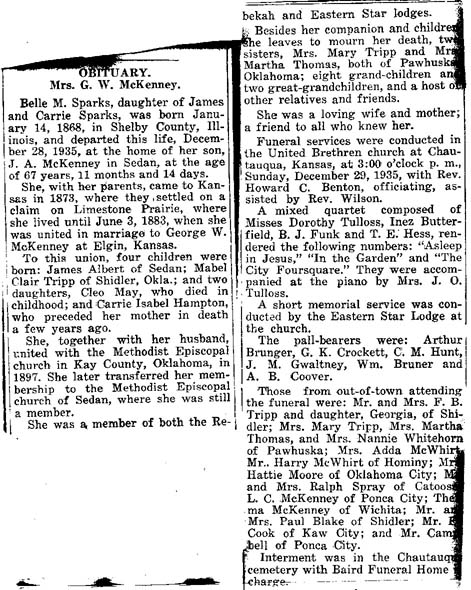
Obituary of Belle Sparks McKenney
Belle Sparks McKenney was the daughter of James Sparks and Carrie Burch, and wife of George W. McKenney Jr. Larry McCombs supplied Belle’s obituary: Mrs. G. W. McKenney Belle M. SPARKS, daughter of James and Carrie SPARKS, was born January 14, 1868, in Shelby County Illinois, and departed this life, December 28, 1935, at the…
-

Ray Noyes Family Gathering
Courtesy of Nancy Benton we have this photo of a Noyes family gathering in Liberal, Missouri circa 1932. From left to right: Jamie Noyes; Ray Noyes behind Mary Lou Noyes; Charles Bryant with Viola Noyes Harmon in front of him and Kathleen Bryant in front of Viola; Pansy Bryant, Lloyd McKinney with Dorothy in front…
-
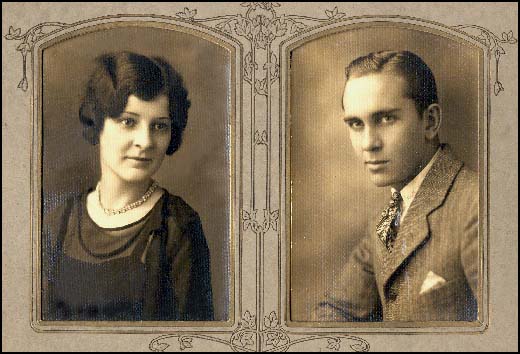
Dorothy Noyes and Lloyd McKenney
Lloyd Clinton McKenney, b. Jan 28 1909 in Chautauqua Co., Kansas, on July 28 1928 married, at Girard, Crawford, Kansas, Dorothy Nadeen Noyes b. Jan 13 1908 at Liberal, Barton, Missouri. Dorothy died April 28, 1985 at Carthage, Jasper, Missouri. Lloyd died Nov 17 1992 at Fort Scott, Bourbon, Kansas. Lloyd was a son of…
-
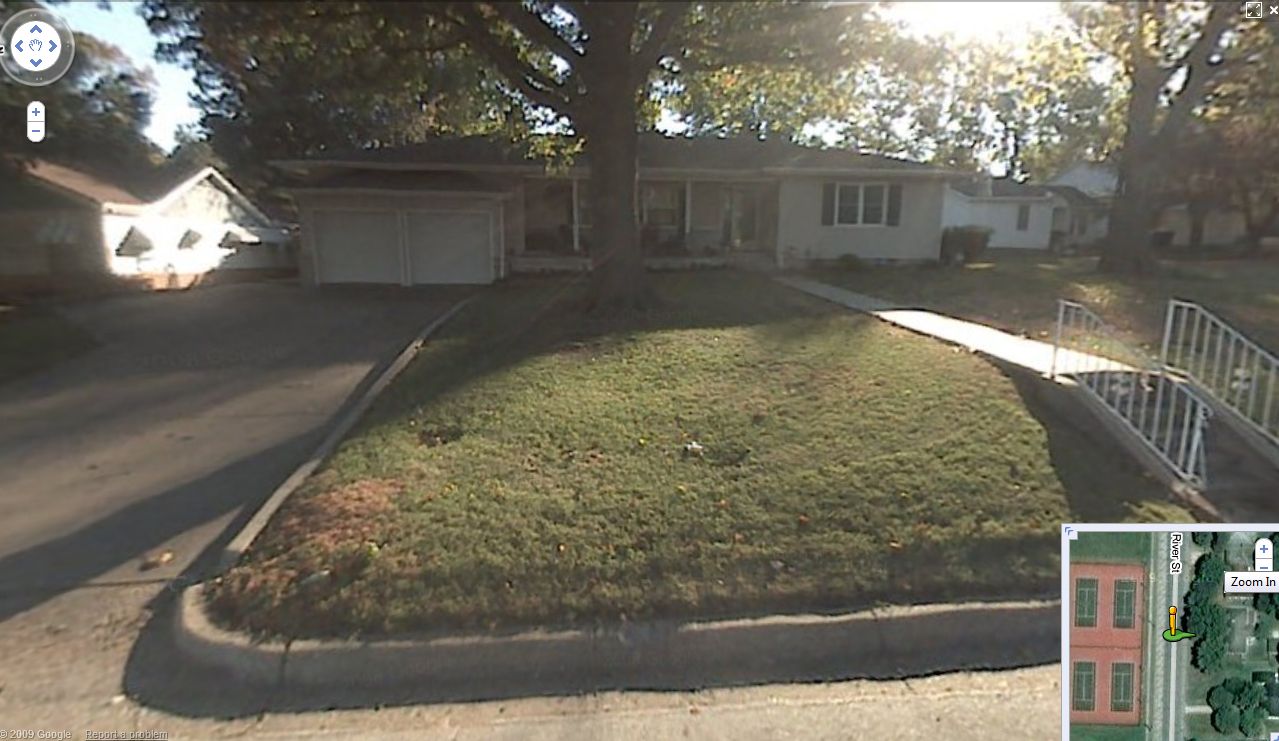
Lloyd and Dorothy’s Home in Carthage
The home of Lloyd and Dorothy Mckenney on Riverside Drive in Carthage, Missouri. They lived here in the 50s through the 80s. Dorothy had decorated it in a combination of mid-twentieth century modern and antiques, with some Japanese flavor sprinkled about here and there, textiles and walls in predominately green hues that were cool and…
-

MORE RECOLLECTIONS FROM LLOYD CLINTON MCKENNEY
MORE RECOLLECTIONS FROM LLOYD CLINTON MCKENNEY These are my notes from a conversation with Lloyd about 1981. — jk Lloyd Clinton McKENNEY started school at about the age of 6 at the Crockett schoolhouse in Chautauqua County, Kansas which was located 1/4 mile from the main house. He says the kitchen at the farm house…
-
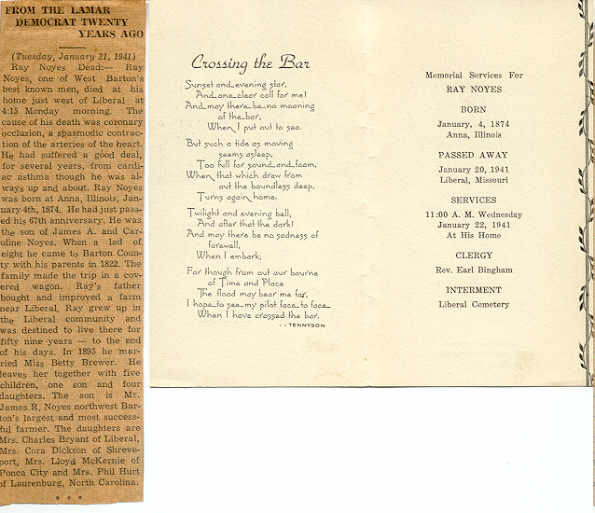
Ray Noyes’ Obituaries
Ray Noyes, husband of Elizabeth Jane “Bettie” Brewer, was the son of James Allen Noyes and Caroline Atwell Noyes. He lived in Liberal, Missouri. Ray is of our line. LAMAR DEMOCRAT obituary (Tuesday, January 21, 1941) for Ray NOYES reads: “Ray Noyes dead–Ray NOYES, one of West Barton’s best known men, died at his home…
-

THE FARM ON LIMESTONE PRAIRIE
My grandfather sent this to me in 1978, which concerns the family farm in Chautauqua county, Kansas that was shared by the McKenneys and Samuel Kelly Crockett and his wife, Sadie Hackney Crockett. The Crockett school is mentioned and my grandfather showed me an old photo of it once, from when he was a boy,…
-
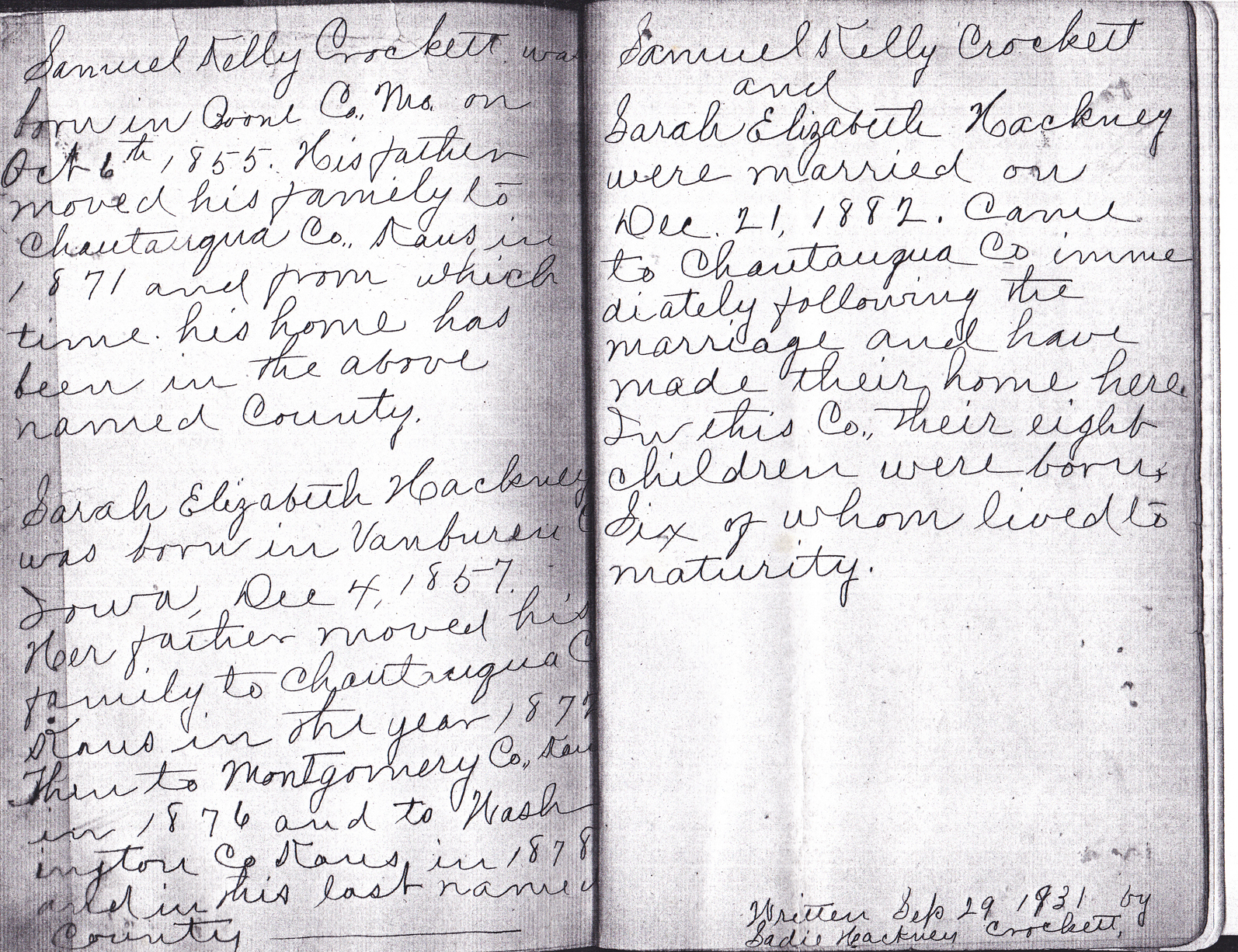
McKenney Bible Images
Thanks to my cousins for sending photocopies of these pages to me. Lloyd McKenney’s bible was used for recording some family history. I didn’t see it until about 2003. The genealogy I received as a child wasn’t in the bible, it was instead on loose paper, but in the case of the Hackney and McKenney…
-

Lloyd McKenney as Child
A beautiful photo from 1909-1910 that shows ancestor Lloyd Clinton McKenney as a child, and a happy one at that. The photo would have been likely taken in Chautauqua County, Kansas, where the family lived. Lloyd was the son of James Albert McKenney and Vera Crockett.